When it comes to the competitive SUV market, two models that have recently caught the attention of enthusiasts and casual drivers alike are the Lexus LBX and the Mazda CX-30. Each brand offers a distinct vision of what a modern SUV should be, blending elegance and practicality with cutting-edge technology. In this article, we will delve into a head-to-head comparison of these two vehicles, examining their specifications, innovations, and overall driving experience.
Lexus LBX vs Mazda CX-30 – Differences & prices compared
Both models have their strengths – but which one suits you more?
Compare performance, efficiency, price and space directly: Lexus LBX or Mazda CX-30?
Power and Performance: Lexus LBX vs. Mazda CX-30
The Lexus LBX is powered by a 1.5-liter full hybrid engine, producing a commendable 136 horsepower and 185 Nm of torque. It is available with both front-wheel and all-wheel drive options, providing versatility for different driving conditions. The LBX features a Continuously Variable Transmission (CVT) that allows for smooth acceleration, achieving 0-100 km/h in the range of 9.2 to 9.6 seconds, while maintaining a fuel consumption as low as 4.5 L/100 km, making it an fuel efficient choice in its class.
On the other hand, the Mazda CX-30 boasts a range of petrol MHEV engines, with outputs from 140 to 186 horsepower. Its more powerful variants reach 240 Nm of torque, enabling quicker acceleration times of 8.3 to 10.3 seconds for the 0-100 km/h sprint. With various transmission options, including manual and automatic gearboxes, the CX-30 provides drivers with a blend of engaging performance and fuel efficiency, with consumption figures ranging from 5.7 to 6.6 L/100 km.
Design and Comfort: Space Meets Style
In terms of design, the Lexus LBX exudes luxury with a sleek exterior, ergonomic interior, and high-quality materials. It stands at 4190 mm in length and boasts a trunk capacity of 332 liters, providing sufficient room for a weekend getaway. With a curb weight ranging between 1280 kg and 1365 kg, it feels both sturdy and nimble on the road.
Conversely, the Mazda CX-30 is slightly larger at 4395 mm, accommodating a trunk space of 430 liters. The CX-30's interior combines practicality with a driver-focused design, offering ample legroom for passengers and a refined aesthetic. Weighing between 1455 kg and 1568 kg, the CX-30 strikes a balance between agility and comfort.
Technology and Innovations
Both the Lexus LBX and Mazda CX-30 are equipped with modern technology designed to enhance the driving experience. The LBX incorporates advanced driver assistance systems, such as adaptive cruise control and a premium infotainment setup, ensuring every journey is as smooth as possible. Features like seamless smartphone integration and intuitive touch controls welcome tech-savvy drivers.
The Mazda CX-30 stands out with its innovative 'Mazda Connect' system, which offers high-level connectivity and a user-friendly interface. It also prioritizes safety with its array of i-Activsense technologies, like lane departure warnings and blind-spot monitoring. This focus on safety and tech enhances the vehicle's appeal for families and tech enthusiasts alike.
Green Credentials: Environmental Impact
In terms of environmental friendliness, the Lexus LBX has the upper hand with its full hybrid powertrain, resulting in lower CO2 emissions of 102 to 109 g/km. The Mazda CX-30, while impressive with its engine outputs, has a higher environmental impact, with CO2 emissions ranging from 129 to 148 g/km depending on the variant.
Final Verdict: Which SUV Reigns Supreme?
Both the Lexus LBX and Mazda CX-30 offer compelling choices in the SUV segment. The LBX appeals to drivers seeking luxury, fuel efficiency, and advanced hybrid technology, while the CX-30 draws in those desiring sportier performance, larger space, and a premium driving experience. Ultimately, the decision comes down to personal preferences—whether one prioritizes eco-friendliness and brand prestige or sporty performance and practicality. Either way, both vehicles set themselves apart in a crowded market, each standing out in their own right.
Here’s where it gets real: The technical differences in detail
Costs and Efficiency:
Looking at overall running costs, both models reveal some interesting differences in everyday economy.
Mazda CX-30 has a a bit advantage in terms of price – it starts at 25200 £, while the Lexus LBX costs 28300 £. That’s a price difference of around 3043 £.
Fuel consumption also shows a difference: Lexus LBX manages with 4.50 L and is therefore clearly perceptible more efficient than the Mazda CX-30 with 5.70 L. The difference is about 1.20 L per 100 km.
Engine and Performance:
Power, torque and acceleration say a lot about how a car feels on the road. This is where you see which model delivers more driving dynamics.
When it comes to engine power, the Mazda CX-30 has a distinct edge – offering 186 HP compared to 136 HP. That’s roughly 50 HP more horsepower.
In acceleration from 0 to 100 km/h, the Mazda CX-30 is to a small extent quicker – completing the sprint in 8.30 s, while the Lexus LBX takes 9.20 s. That’s about 0.90 s faster.
In terms of top speed, the Mazda CX-30 performs to a small extent better – reaching 204 km/h, while the Lexus LBX tops out at 170 km/h. The difference is around 34 km/h.
There’s also a difference in torque: Mazda CX-30 pulls noticeable stronger with 240 Nm compared to 185 Nm. That’s about 55 Nm difference.
Space and Everyday Use:
Beyond pure performance, interior space and usability matter most in daily life. This is where you see which car is more practical and versatile.
Both vehicles offer seating for 5 people.
In curb weight, Lexus LBX is slightly lighter – 1280 kg compared to 1455 kg. The difference is around 175 kg.
In terms of boot space, the Mazda CX-30 offers distinct more room – 430 L compared to 332 L. That’s a difference of about 98 L.
In maximum load capacity, the Mazda CX-30 performs noticeable better – up to 1406 L, which is about 412 L more than the Lexus LBX.
When it comes to payload, Mazda CX-30 hardly perceptible takes the win – 496 kg compared to 475 kg. That’s a difference of about 21 kg.
Who comes out on top?
Overall, the Mazda CX-30 shows itself to be is largely superior and secures the title of DriveDuel Champion.
It convinces with the more balanced overall package and proves to be the more versatile choice for everyday use.
 @ Mazda Motor Corporation
@ Mazda Motor Corporation
Mazda CX-30
Lexus LBX
The Lexus LBX wraps premium touches and a surprisingly spacious cabin into a compact crossover that’s perfectly at home in town or heading out on longer drives. It wears the badge with quiet confidence, serving up a refined ride and clever packaging for buyers who want Lexus polish without shouting for attention.
details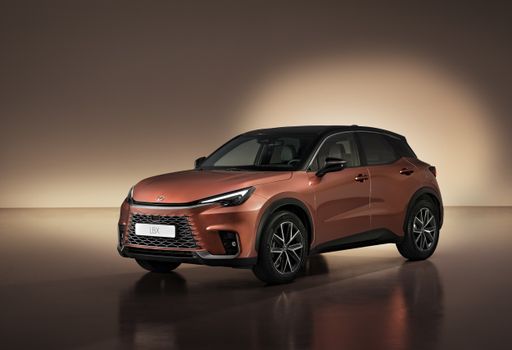 @ Lexus / Toyota Motor Corporation
@ Lexus / Toyota Motor Corporation
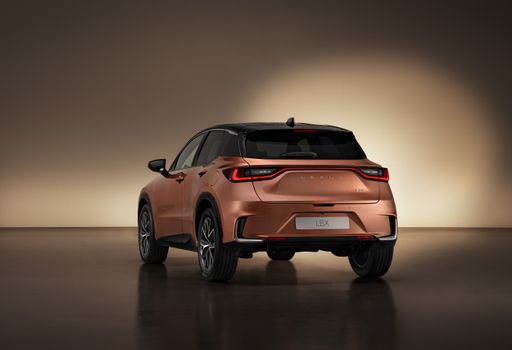 @ Lexus / Toyota Motor Corporation
@ Lexus / Toyota Motor Corporation
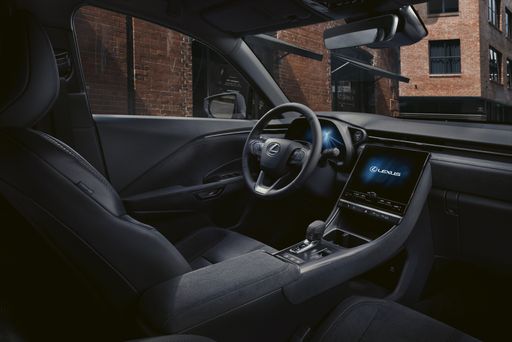 @ Lexus / Toyota Motor Corporation
@ Lexus / Toyota Motor Corporation
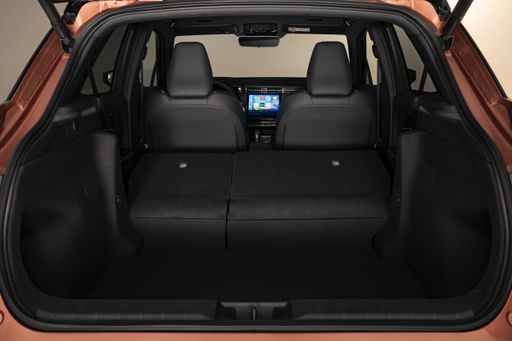 @ Lexus / Toyota Motor Corporation
@ Lexus / Toyota Motor Corporation
Mazda CX-30
The Mazda CX-30 blends sleek coupe-like lines with the practicality of a compact crossover, feeling more premium than its price tag suggests. It’s a joy to drive for anyone who likes a taut chassis and an interior that treats daily commutes like a small luxury escape.
details @ Mazda Motor Corporation
@ Mazda Motor Corporation
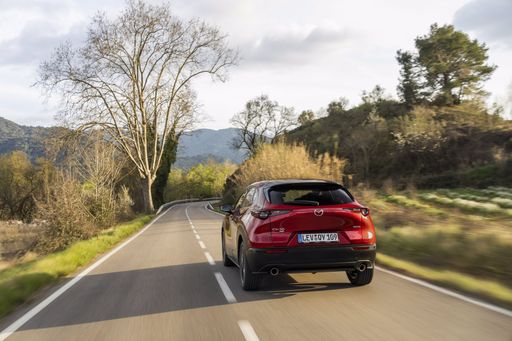 @ Mazda Motor Corporation
@ Mazda Motor Corporation
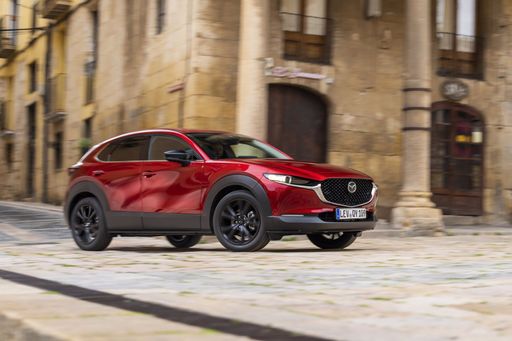 @ Mazda Motor Corporation
@ Mazda Motor Corporation
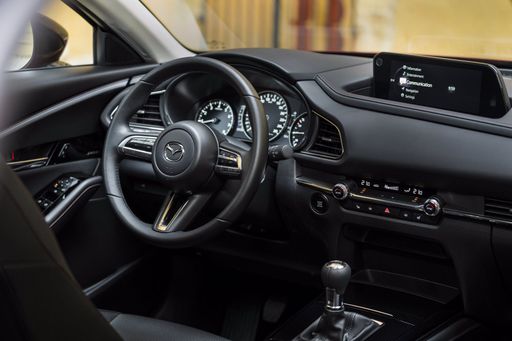 @ Mazda Motor Corporation
@ Mazda Motor Corporation
 @ Lexus / Toyota Motor Corporation
@ Lexus / Toyota Motor Corporation
|
 @ Mazda Motor Corporation
@ Mazda Motor Corporation
|
|
|
|
Costs and Consumption |
|
|---|---|
|
Price
28300 - 40000 £
|
Price
25200 - 36800 £
|
|
Consumption L/100km
4.5 - 4.8 L
|
Consumption L/100km
5.7 - 6.6 L
|
|
Consumption kWh/100km
-
|
Consumption kWh/100km
-
|
|
Electric Range
-
|
Electric Range
-
|
|
Battery Capacity
-
|
Battery Capacity
-
|
|
co2
102 - 110 g/km
|
co2
129 - 148 g/km
|
|
Fuel tank capacity
36 L
|
Fuel tank capacity
48 - 51 L
|
Dimensions and Body |
|
|---|---|
|
Body Type
SUV
|
Body Type
SUV
|
|
Seats
5
|
Seats
5
|
|
Doors
5
|
Doors
5
|
|
Curb weight
1280 - 1365 kg
|
Curb weight
1455 - 1587 kg
|
|
Trunk capacity
255 - 332 L
|
Trunk capacity
422 - 430 L
|
|
Length
4190 mm
|
Length
4395 mm
|
|
Width
1825 mm
|
Width
1795 mm
|
|
Height
1560 mm
|
Height
1540 mm
|
|
Max trunk capacity
992 - 994 L
|
Max trunk capacity
1398 - 1406 L
|
|
Payload
455 - 475 kg
|
Payload
458 - 496 kg
|
Engine and Performance |
|
|---|---|
|
Engine Type
Full Hybrid
|
Engine Type
Petrol MHEV
|
|
Transmission
Automatic
|
Transmission
Manuel, Automatic
|
|
Transmission Detail
CVT
|
Transmission Detail
Manual Gearbox, Automatic Gearbox
|
|
Drive Type
Front-Wheel Drive, All-Wheel Drive
|
Drive Type
Front-Wheel Drive, All-Wheel Drive
|
|
Power HP
136 HP
|
Power HP
140 - 186 HP
|
|
Acceleration 0-100km/h
9.2 - 9.6 s
|
Acceleration 0-100km/h
8.3 - 10.3 s
|
|
Max Speed
170 km/h
|
Max Speed
191 - 204 km/h
|
|
Torque
185 Nm
|
Torque
238 - 240 Nm
|
|
Number of Cylinders
3
|
Number of Cylinders
4
|
|
Power kW
100 kW
|
Power kW
103 - 137 kW
|
|
Engine capacity
1490 cm3
|
Engine capacity
1998 - 2488 cm3
|
General |
|
|---|---|
|
Model Year
2025
|
Model Year
2025
|
|
CO2 Efficiency Class
C
|
CO2 Efficiency Class
D, E
|
|
Brand
Lexus
|
Brand
Mazda
|
What drivetrain options does the Lexus LBX have?
Available configurations include Front-Wheel Drive or All-Wheel Drive.
The prices and data displayed are estimates based on German list prices and may vary by country. This information is not legally binding.
